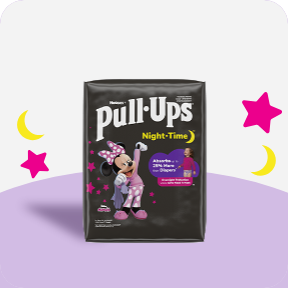Regression
Potty Training Resistance? Know When To Back Off
18 Jan, 2023
4 min. Read
Even if you’ve made the best plan, it’s possible your toddler refuses potty training — at least for a while. Potty training resistance is most commonly seen in shy kids who feel all this growing up is just happening too darn fast. Cautious kids who start to feel out of control will begin to resist, too. And even kids with high-energy, free-spirited and eager-to-please potty training personalities will resist if they’ve been pushed too far, too fast. So, what should you do if your toddler refuses to use the potty?When your potty training adventure is hitting a roadblock, your first thought may be to search for tips on how to potty train your stubborn child. But remember: Your child might not necessarily be stubborn. They might just not be ready. There are some good reasons to hold off on potty training that are worth considering.
Having a child with potty training resistance can be challenging, but it isn’t worth the stress or long-term effects of turning the journey into a battle. Focus on the positive, be patient and try to stay positive. Save the debates for the teenage years when it’s time to talk curfew!
Remember: It’s Their Body
The simple truth is you can’t force a child to pee or poop. As frustrated as you may be by your child if they are refusing to use the potty — or if they use the potty at daycare or preschool but not at home — no amount of pushing will fix the issue. If your child is demonstrating potty training resistance, it’s a sign to immediately back off. Sure, it might not be easy. But it’s worth it. That’s because if you push too much on this issue the same type of power struggle is very likely to emerge again in other areas. If your child has been using the potty but suddenly starts having accidents, it’s called regression. It can happen for many reasons, but they’re usually related to stress (something every parent with a toddler knows a little bit about, right?).Position Potty Training as Your Child’s Choice
Try to think of yourself as a potty training coach — not as your child’s potty supervisor. Tell your child you’re sorry for pressuring them about the potty, and that from now on, they can decide where they poop and pee – it’s THEIR body. But before you do it, take a deep breath and make sure you have a calm tone. Don’t scold and don’t get emotional about it. They’ll know if you’re faking it. This doesn’t mean your child gets to be the boss in every area — far from it. But there’s really no way for you to win this battle. And lots of ways you can make it worse. Forcing a child to potty train by using threats, punishments or other coercive methods will eventually backfire. And showing disapproval when an accident happens can add even more negativity to the situation. If your child is doing the deed out of fear, they might comply — for now. But it’s much more likely there will be physical or psychological consequences down the line including constipation and other complications. Too much pressure can make your child feel like they’re using the potty for you (or for their teacher, Grandma or someone else), not for themselves. They won’t internalize that sense of control and success that’s so important — in potty training and in so many parts of life.Re-evaluate Your Potty Training Approach
Now that you’ve defused any arguments about potty training that were brewing between you and your toddler, think about what’s next. Let go of whatever expectations you’ve had and move forward together when you’re BOTH ready. Here are some ideas for potty training that might help make the process easier for you and your child:- Know how to talk about potty training. If you’ve taken our Potty Training Personality Quiz, see our potty scripts for ideas on what to say to your resistant little trainer based on their personality: eager-to-please, shy, high-energy, cautious or free-spirited.
- Serve up some crunchy goodness. Constipation can lead to painful poops, which can be a reason for potty training resistance. Be sure your child is eating plenty of fiber-rich fruits and veggies, which can help them avoid constipation.
- Make sure you’re being consistent. Kids want to be in control of the potty training process, but creating consistency is an important task parents can help with. When you take your child out of diapers and switch to Pull-Ups® training pants, make the switch permanent (well, until it’s time for Big Kid undies, that is!). Wearing Pull-Ups® training pants is a symbol of how much your child is grown, so ditch the diapers and keep that message clear.
- Add some fun to the process. Check out these potty training games along with our tips to make potty training fun. If you’ve already been using some fun potty training rewards and games, mix it up and try something new. What gets one kid excited — like a sticker chart — might not be motivating for another. Knowing your child’s potty personality can help you figure out how to pique their interest and keep them engaged in the potty training journey.
- Look at your gear. If you’re using a regular toilet, make sure you have a child-size potty seat that makes your toddler feel comfortable. A toilet can be big and a little scary for some kids — especially with that loud flush. If you don’t think the regular toilet is working, try a portable potty chair. Of course, if you’re not having success with a potty chair, trying out the regular toilet is worth a try too. Ask your child what they feel more comfortable using.










